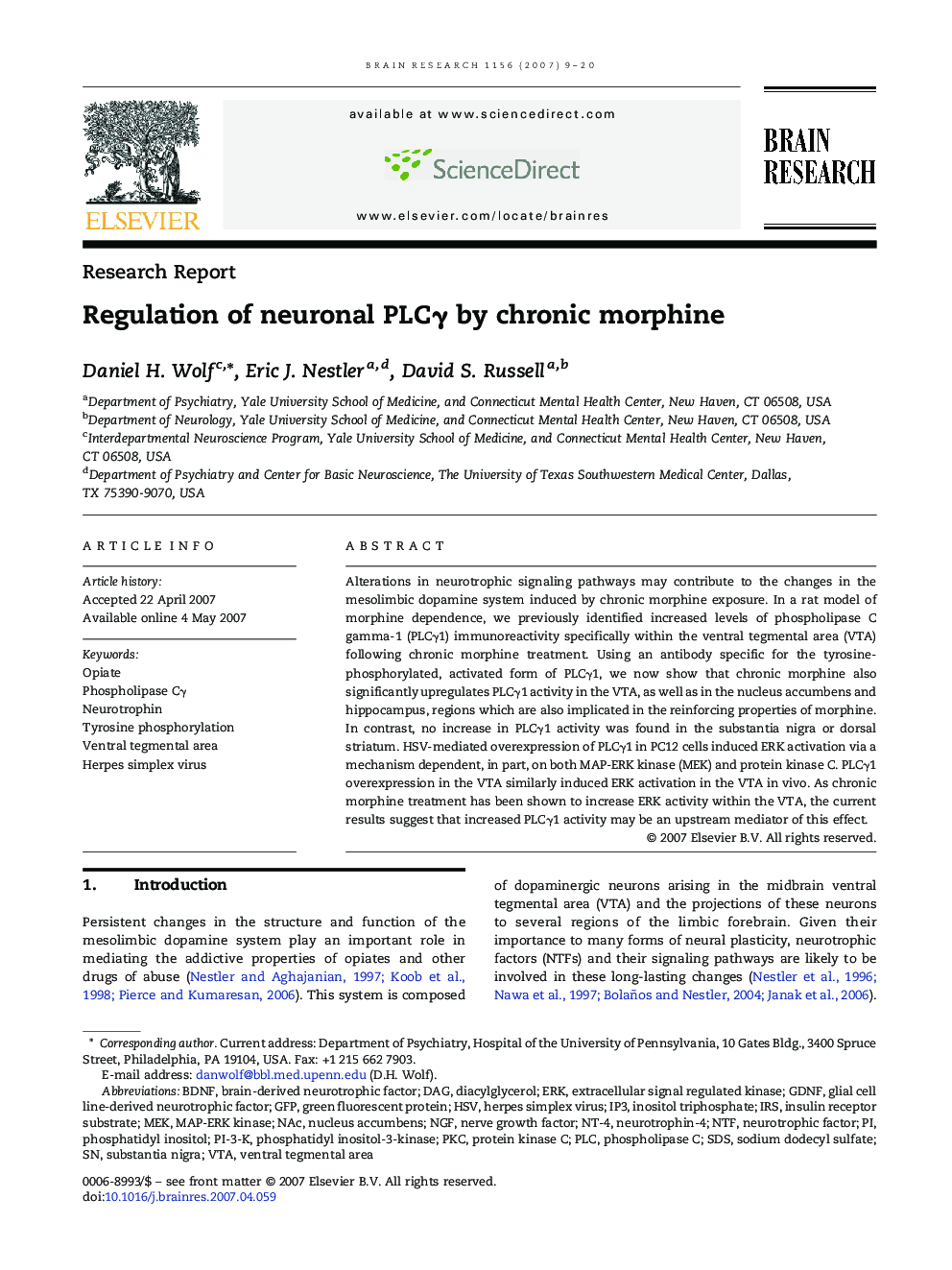| Article ID | Journal | Published Year | Pages | File Type |
|---|---|---|---|---|
| 4330959 | Brain Research | 2007 | 12 Pages |
Alterations in neurotrophic signaling pathways may contribute to the changes in the mesolimbic dopamine system induced by chronic morphine exposure. In a rat model of morphine dependence, we previously identified increased levels of phospholipase C gamma-1 (PLCγ1) immunoreactivity specifically within the ventral tegmental area (VTA) following chronic morphine treatment. Using an antibody specific for the tyrosine-phosphorylated, activated form of PLCγ1, we now show that chronic morphine also significantly upregulates PLCγ1 activity in the VTA, as well as in the nucleus accumbens and hippocampus, regions which are also implicated in the reinforcing properties of morphine. In contrast, no increase in PLCγ1 activity was found in the substantia nigra or dorsal striatum. HSV-mediated overexpression of PLCγ1 in PC12 cells induced ERK activation via a mechanism dependent, in part, on both MAP-ERK kinase (MEK) and protein kinase C. PLCγ1 overexpression in the VTA similarly induced ERK activation in the VTA in vivo. As chronic morphine treatment has been shown to increase ERK activity within the VTA, the current results suggest that increased PLCγ1 activity may be an upstream mediator of this effect.
